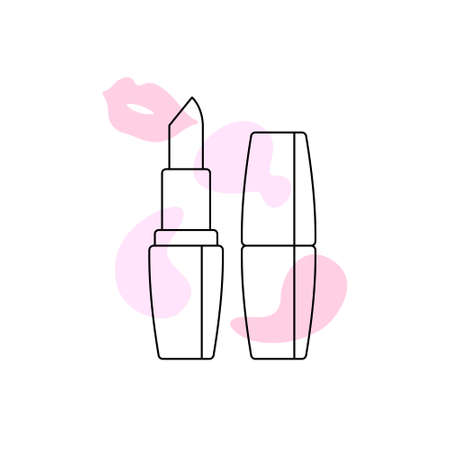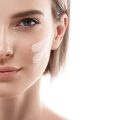Understanding Dark Circles: Causes and Myths in the UK
Dark circles under the eyes are a common concern for many Britons, often leading to an endless search for the most effective eye creams and serums. However, before delving into which products truly work, it is essential to understand the underlying causes specific to the UK lifestyle and environment. Contrary to popular belief, dark circles are not solely a sign of fatigue or ageing. Instead, their formation can be attributed to a combination of factors including genetics, environmental stressors, and lifestyle choices that are particularly relevant in the UK context.
Common Causes of Dark Circles Among Britons
| Cause | Description | UK Relevance |
|---|---|---|
| Genetics | Inherited traits like thin skin or hyperpigmentation around the eyes | Common in diverse UK populations; family history plays a significant role |
| Lifestyle Factors | Lack of sleep, excessive screen time, poor hydration, and high-stress levels | Modern British routines often contribute due to busy work-life balance |
| Environmental Factors | Poor air quality, central heating, and limited sunlight exposure | Urban living and long winters can exacerbate dark circles |
| Allergies & Sinus Issues | Nasal congestion increases blood flow near eyes causing discolouration | Frequent in the UK due to pollen and weather changes |
Myths Surrounding Dark Circles in the UK
- “Only tired people get dark circles”: Fatigue is just one factor; genetics and allergies matter too.
- “They can be completely removed with any eye cream”: No single product offers a universal cure as causes vary by individual.
- “Sun exposure doesn’t affect under-eye skin”: Even in cloudy Britain, UV rays penetrate and may worsen pigmentation.
The Takeaway for British Consumers
Understanding these causes is crucial when choosing eye creams and serums tailored for life in the UK. By recognising what truly leads to dark circles—rather than relying on persistent myths—Britons can make more informed decisions about which products are likely to be effective for their unique needs.
Eye Creams vs Eye Serums: Key Differences
When it comes to tackling dark circles, understanding the difference between eye creams and eye serums is crucial—especially in the ever-changing UK climate. Both products promise targeted results, but their formulation, texture, and efficacy can differ significantly. Here’s a detailed comparison to help you decide which might be best for your skincare needs.
Texture & Consistency
One of the most noticeable differences is texture. Eye creams are generally thicker and richer, designed to provide deep hydration and a protective barrier against environmental stressors. This makes them ideal during the colder, windier months in the UK, where skin tends to lose moisture rapidly. In contrast, eye serums are lightweight and fast-absorbing, often with a gel-like or fluid consistency. They are perfect for layering under makeup or during warmer, more humid British summers when heavy creams can feel too rich.
| Product Type | Texture | Main Benefit | UK Suitability |
|---|---|---|---|
| Eye Cream | Rich & thick | Intense hydration | Best for dry/normal skin & cold weather |
| Eye Serum | Lightweight & fluid | Quick absorption & potent actives | Great for oily/combination skin & warm weather |
Ingredients Spotlight
The ingredient list also sets these products apart. Eye creams commonly contain emollients (like shea butter or squalane), occlusives (such as petrolatum), and hydrating agents (like hyaluronic acid). These components are excellent for locking in moisture and protecting delicate under-eye skin from harsh winds and central heating—both prevalent across the UK.
On the other hand, eye serums pack a punch with higher concentrations of active ingredients such as vitamin C, retinol, peptides, and caffeine. These actives target pigmentation, puffiness, and fine lines more aggressively, making serums a top choice for those seeking visible improvement in dark circles and tired-looking eyes.
Key Ingredients Comparison Table
| Product Type | Main Ingredients | Benefits for Dark Circles |
|---|---|---|
| Eye Creams | Squalane, Shea Butter, Hyaluronic Acid | Nourishes & moisturises, reduces dryness-induced darkness |
| Eye Serums | Caffeine, Vitamin C, Peptides, Retinol | Brightens pigmentation, boosts collagen, reduces puffiness |
Absorption & Layering Ability
The absorption rate is another significant factor—eye serums penetrate quickly into the skin due to their lightweight nature, making them ideal for morning routines or as a base layer before applying an eye cream at night. Creams take longer to absorb but provide lasting comfort and protection against external aggressors common in British cities like London or Manchester.
What Suits Different Skin Types in the UK?
If you have dry or mature skin—especially during winter—a nourishing eye cream will likely offer better results. For those with oily or combination skin types or anyone looking to address pigmentation directly (a concern made worse by lack of sunlight in UK winters), an eye serum could be more effective.
Ultimately, many Brits find success by combining both: using a serum first for targeted treatment followed by a cream to seal in moisture. With this approach, you can adapt your routine to suit changing seasons and individual skin needs.
![]()
3. Essential Ingredients: What to Look For
When choosing an eye cream or serum for dark circles, it’s crucial to focus on ingredients that have been scientifically proven to brighten, hydrate, and revitalise the delicate under-eye area. The British skincare market is brimming with options, but understanding which components truly deliver results can save you both time and money.
Key Ingredients for Dark Circles
| Ingredient | Main Benefit | How It Works for Under-Eye Skin |
|---|---|---|
| Vitamin C | Brightening & Antioxidant Protection | Helps lighten hyperpigmentation and evens skin tone, combating dullness and reducing visible dark circles over time. |
| Hyaluronic Acid | Hydration & Plumping Effect | Deeply hydrates, plumps fine lines, and smooths the under-eye area for a fresher appearance. Particularly beneficial in the UK’s often dry or changeable climate. |
| Caffeine | Reduces Puffiness & Stimulates Circulation | Constrains blood vessels, helping diminish puffiness and the blueish tint typical of dark circles caused by poor microcirculation. |
| Peptides | Firming & Repairing | Support collagen production, improving skin elasticity and thickness to reduce shadowing beneath the eyes. |
| Niacinamide (Vitamin B3) | Smoothing & Brightening | Evens out skin tone and strengthens the skin barrier, making under-eyes less susceptible to environmental stressors common in British cities. |
The Science Behind These Ingredients
Vitamin C, a staple in many UK-based formulations, acts as a powerful antioxidant to neutralise free radicals from urban pollution—an ever-present concern in cities like London or Manchester. Hyaluronic acid’s moisture-retaining abilities help counteract the drying effects of central heating during colder months or air conditioning in summer. Meanwhile, caffeine’s depuffing effect is ideal for those early morning commutes or late-night work sessions so common in British life.
Choosing Products That Suit Your Needs
If your main concern is pigmentation, prioritise products featuring vitamin C and niacinamide. For tired-looking or puffy eyes, opt for caffeine-infused serums. Those with mature skin may benefit most from peptide-rich creams that target loss of firmness. Always remember: with the sensitive nature of under-eye skin, patch testing new products is recommended before regular use—especially if you have allergies or sensitive skin prone to reactions.
Top Rated Eye Creams & Serums in the UK
Choosing the right eye cream or serum can feel daunting, especially with so many options on the British high street and online. To help you navigate, we’ve rounded up some of the most highly-rated, readily available products in the UK market, combining customer feedback with expert analysis. Each product below has been selected for its effectiveness in targeting dark circles and suitability for common UK skin concerns such as puffiness and sensitivity.
Best-Selling Eye Creams & Serums: At-a-Glance Comparison
| Product | Key Ingredients | Main Benefits | Customer Rating (UK) | Price Range (£) |
|---|---|---|---|---|
| CeraVe Eye Repair Cream | Ceramides, Hyaluronic Acid, Niacinamide | Hydrates, reduces dark circles, fragrance-free | 4.5/5 (Boots) | 10–13 |
| The Ordinary Caffeine Solution 5% + EGCG | Caffeine, EGCG (Green Tea Extract) | Targets puffiness & pigmentation, lightweight serum | 4.4/5 (Lookfantastic) | 6–8 |
| Kiehl’s Creamy Eye Treatment with Avocado | Avocado Oil, Beta-Carotene, Shea Butter | Nourishing, rich texture for dry under-eyes | 4.6/5 (John Lewis) | 28–42 |
| No7 Laboratories Dark Circle Corrector | Colour Correctors, Lightening Complex | Instant brightening effect, suitable for sensitive skin | 4.3/5 (Boots) | 18–22 |
| L’Oreal Paris Revitalift Filler Eye Serum | Hyaluronic Acid, Caffeine, Vitamin Cg | Smooths fine lines, visibly plumps under-eye area | 4.2/5 (Superdrug) | 20–25 |
| Eucerin Hyaluron-Filler Eye Cream SPF15 | Hyaluronic Acid, Saponin, SPF15 | Tackles wrinkles & protects from UV damage | 4.1/5 (Boots) | 18–24 |
Expert Analysis & Recommendations
CeraVe Eye Repair Cream: Best for Sensitive Skin & First-Time Users
This affordable favourite is frequently recommended by dermatologists for its gentle yet effective formula. The inclusion of ceramides supports the skin barrier while hyaluronic acid provides essential hydration — ideal for those experiencing dryness or irritation around the eyes. Its fragrance-free nature makes it particularly suitable for sensitive British complexions.
The Ordinary Caffeine Solution 5% + EGCG: Best Budget Option for Puffiness & Pigmentation
A cult classic on the UK market, this lightweight serum utilises caffeine and antioxidant-rich green tea extract to reduce puffiness and diminish the appearance of dark circles. While results vary depending on the cause of your under-eye darkness, it’s a wallet-friendly starting point widely praised by younger users and night-shift workers alike.
Kiehl’s Creamy Eye Treatment with Avocado: Best for Dry Under-Eyes & Rich Hydration
If you struggle with dryness during harsh British winters or are prone to dehydration lines under your eyes, Kiehl’s iconic formula offers intensive nourishment. Its buttery texture melts into the skin without migrating into eyes — a plus for contact lens wearers.
No7 Laboratories Dark Circle Corrector: Best Instant Brightening Effect
No7’s offering stands out thanks to its colour-correcting pigments that immediately brighten tired-looking eyes. It’s a good choice if you need quick visible results before an event or early morning meeting. Suitable for most skin tones found in the UK.
L’Oreal Paris Revitalift Filler Eye Serum: Best for Plumping & Fine Lines
This drugstore staple is beloved for its combination of hyaluronic acid and caffeine, tackling both volume loss and morning puffiness. Its metal applicator adds a cooling sensation which helps de-puff even further — a bonus after late nights or long commutes.
Eucerin Hyaluron-Filler Eye Cream SPF15: Best for Anti-Ageing & Sun Protection
A popular choice among those wanting all-in-one anti-ageing benefits plus daily sun protection — crucial even in Britain’s cloudy climate. The added SPF helps prevent further darkening of under-eye pigmentation due to incidental UV exposure.
Final Thoughts on Choosing Your Ideal Product
Your perfect eye cream or serum will depend on your individual needs — whether you’re after maximum hydration during cold snaps in Scotland or looking to conceal stubborn dark circles after a London commute. Always patch-test new products and consider consulting a skincare expert if you have persistent under-eye concerns beyond cosmetic solutions.
5. How to Apply Eye Products for Best Results
Using eye creams and serums effectively is just as important as choosing the right product, especially in the UK, where weather fluctuations and indoor heating can impact your skin’s needs. Here’s a step-by-step guide to help you get the most from your eye treatments, tailored for British routines and climate:
Step-by-Step Application Guide
- Cleanse Gently: Always start with a mild, fragrance-free cleanser suitable for sensitive skin. Pat dry with a soft towel, avoiding any harsh rubbing which can irritate delicate under-eye areas.
- Apply Toner (Optional): If toner is part of your routine, ensure it is alcohol-free to prevent further dryness—something common during chilly UK winters.
- Dispense Sparingly: Take a pea-sized amount of eye cream or two drops of serum per eye. Over-applying can cause puffiness or even milia (tiny white bumps).
- Pat, Don’t Rub: Using your ring finger (the weakest), gently tap the product along the orbital bone—starting from the inner corner under your eye and moving outward. Avoid getting too close to the lash line to prevent irritation.
- Layering Matters: If you use both an eye serum and cream, apply the lighter serum first, wait a minute for absorption, then follow with the cream.
- Let It Absorb: Wait at least 5-10 minutes before applying other products like moisturisers or sunscreen to allow full absorption—crucial on busy mornings in Britain’s often humid-to-damp climate.
Tips Tailored for the UK Climate
| Climate Challenge | Application Tip |
|---|---|
| Cold & Windy Weather | Opt for richer creams and ensure thorough hydration before heading outdoors. |
| Central Heating Indoors | Avoid over-layering products; stick to hydrating serums or creams that lock in moisture without feeling greasy. |
| Summer Humidity | Switch to lightweight gel-based formulas to prevent congestion and excess shine around the eyes. |
Common UK Skincare Routine Integration
- If you’re using retinol or vitamin C serums elsewhere on your face, check compatibility with your chosen eye product to avoid irritation.
- Sunscreen is essential even on cloudy British days—apply after your eye treatment if venturing outdoors.
Final Advice
The key is consistency: apply morning and night for best results. Remember, patience is vital; most users in the UK report visible improvements in dark circles after 4-6 weeks of diligent use, particularly when adjusting their routines to match seasonal changes.
6. Realistic Expectations and When to Seek Extra Help
While eye creams and serums are a staple in many British skincare routines, it’s important to set realistic expectations when targeting dark circles. Most over-the-counter products offer gradual improvements rather than dramatic overnight changes. Factors such as genetics, lifestyle (including sleep patterns and screen time), and underlying health conditions play significant roles in the appearance of under-eye darkness.
What Results Can You Expect?
| Product Type | Key Ingredients | Typical Results (4–8 weeks) |
|---|---|---|
| Caffeine-based Eye Creams | Caffeine, peptides | Reduced puffiness, mild lightening of dark circles, temporary tightening effect |
| Retinol Serums | Retinol, hyaluronic acid | Smoother texture, minor reduction in pigmentation, increased skin firmness |
| Vitamin C Serums | Vitamin C, niacinamide | Slight brightening of under-eye area, improved skin radiance |
Limitations to Keep in Mind
- No topical product can completely erase hereditary or deep-set dark circles.
- Pigmentation caused by allergies or vascular issues may see minimal improvement with standard creams.
- Consistency is crucial; skipping applications will significantly slow progress.
When Should You See a Professional?
If you’ve diligently used eye products for 2–3 months without noticeable improvement, it may be time to consult a skincare professional or dermatologist in the UK. Consider seeking extra help if:
- Your dark circles are worsening despite regular care.
- You experience itching, swelling, or irritation around the eyes.
- You suspect allergies or medical conditions could be contributing factors.
Professional Treatments Available in the UK
- Chemical peels targeted for pigmentation concerns.
- Prescription-strength topical treatments.
- Laser therapy for vascular or pigmentation issues.
Final Thoughts
The best approach combines a realistic outlook with consistent use of well-formulated products tailored to your skin type. While eye creams and serums can offer visible benefits for many people in the UK, severe or persistent dark circles may require personalised advice from a qualified expert. Don’t hesitate to visit your local GP or dermatologist for guidance on advanced treatment options available across the UK.


